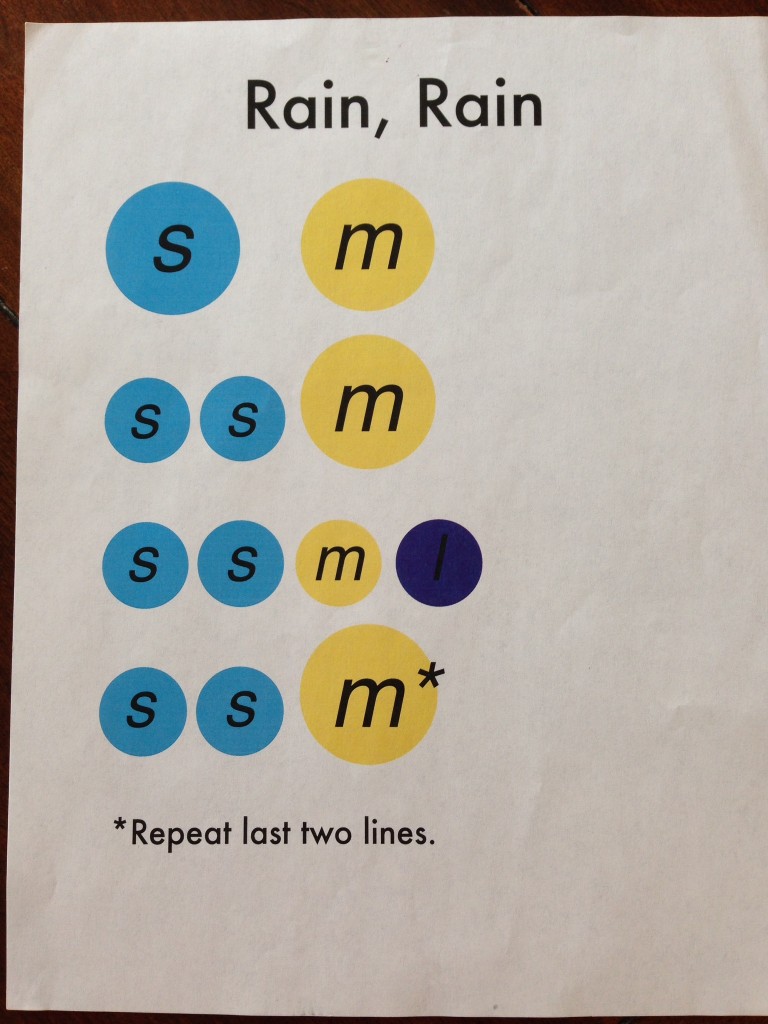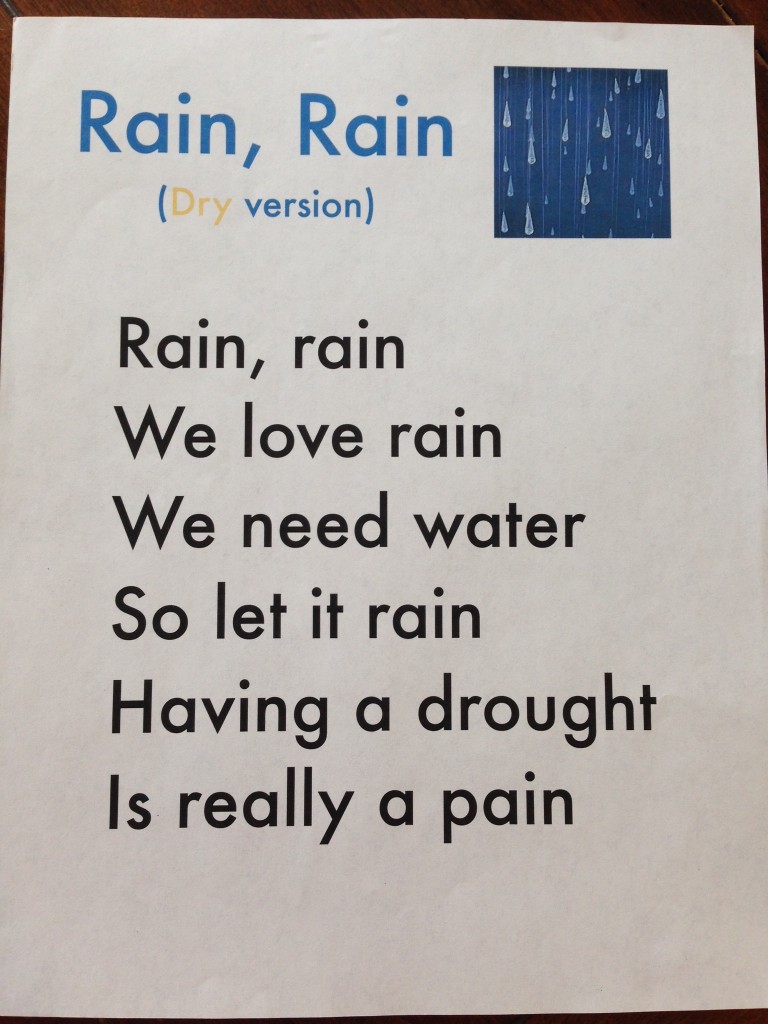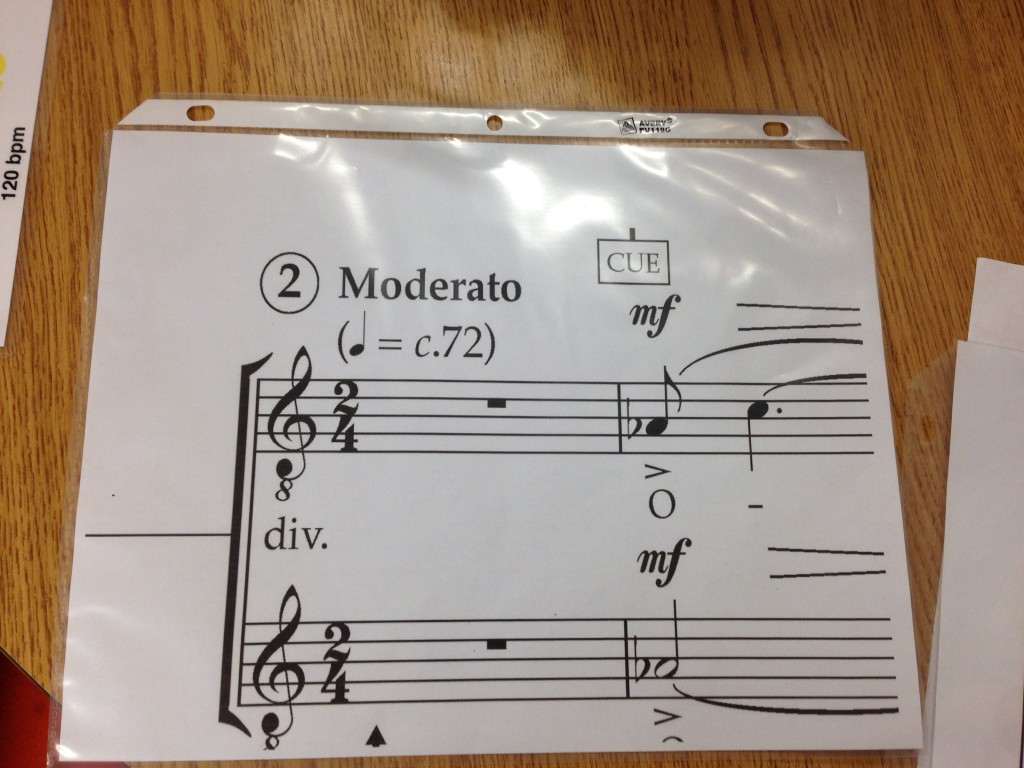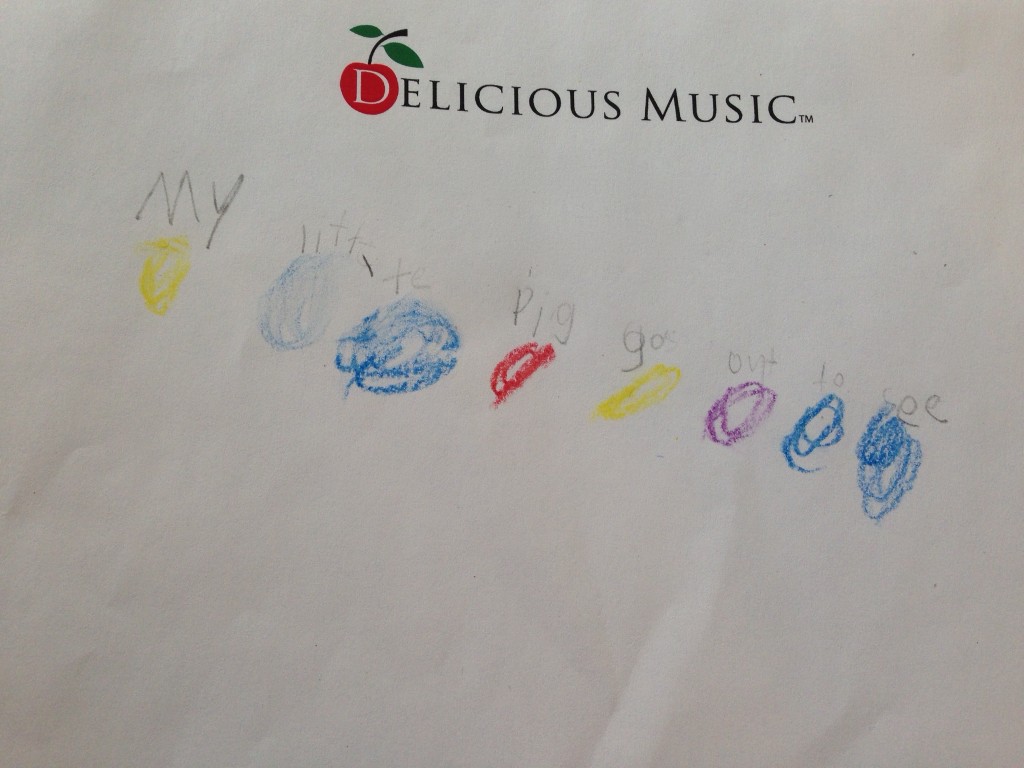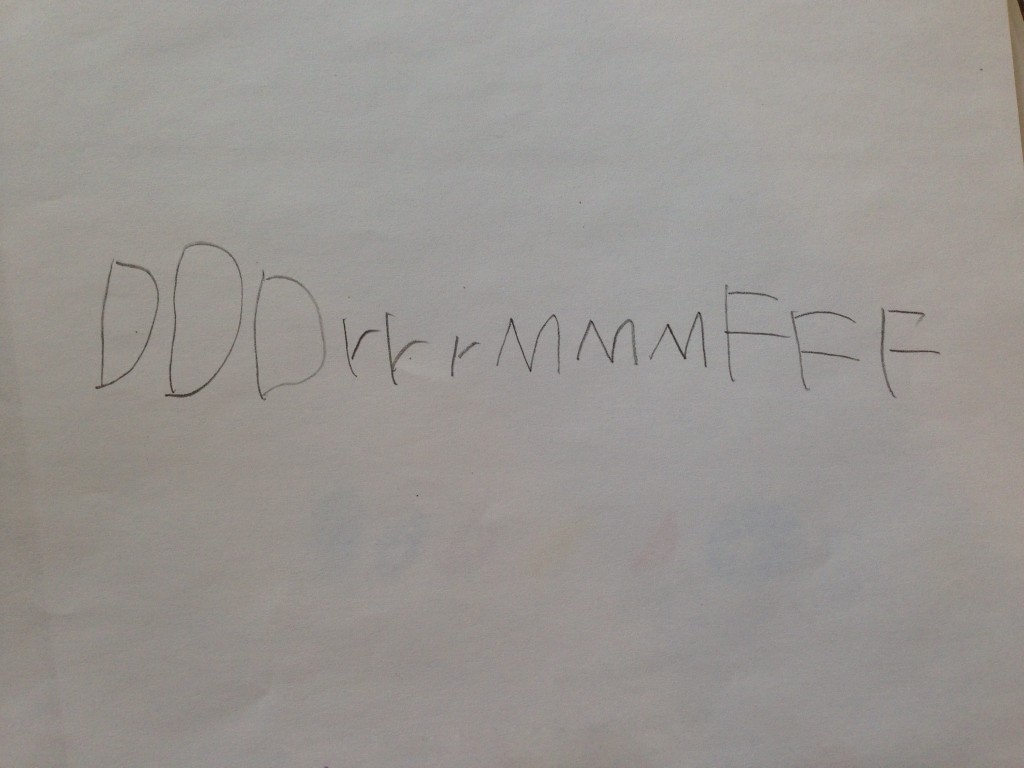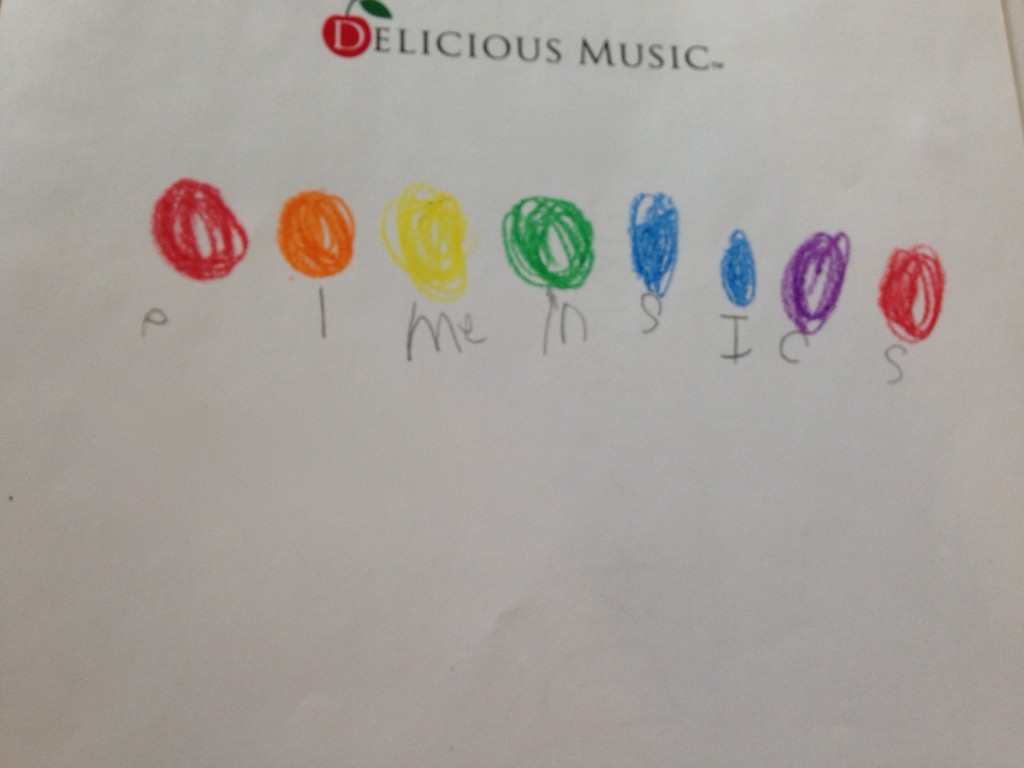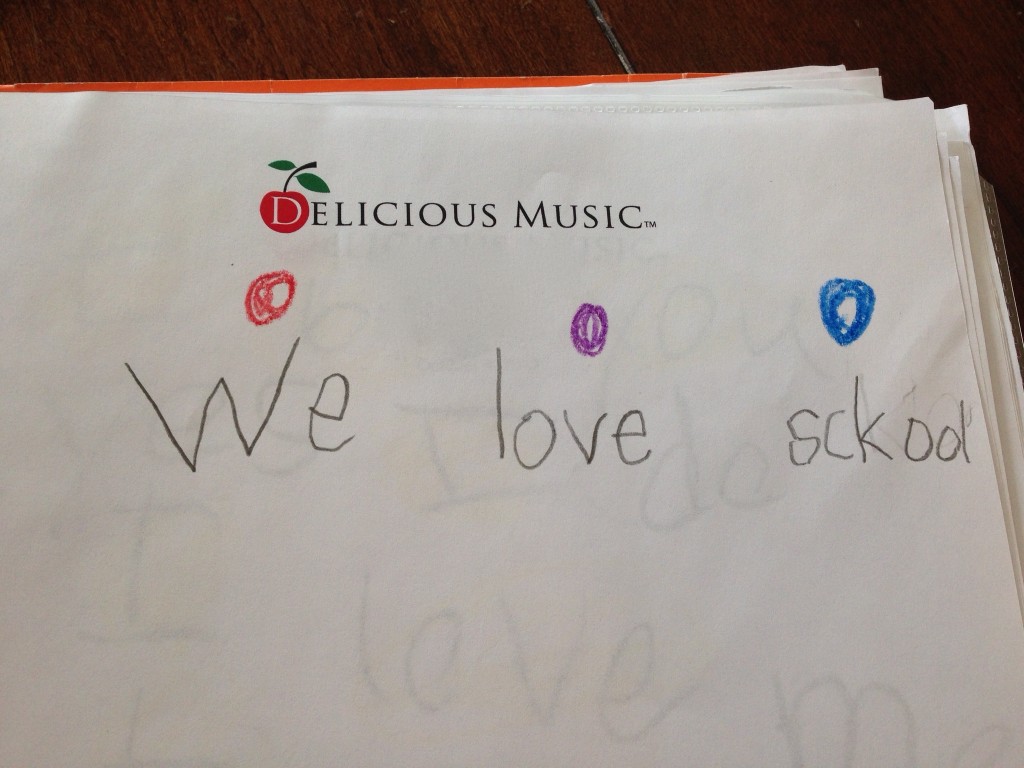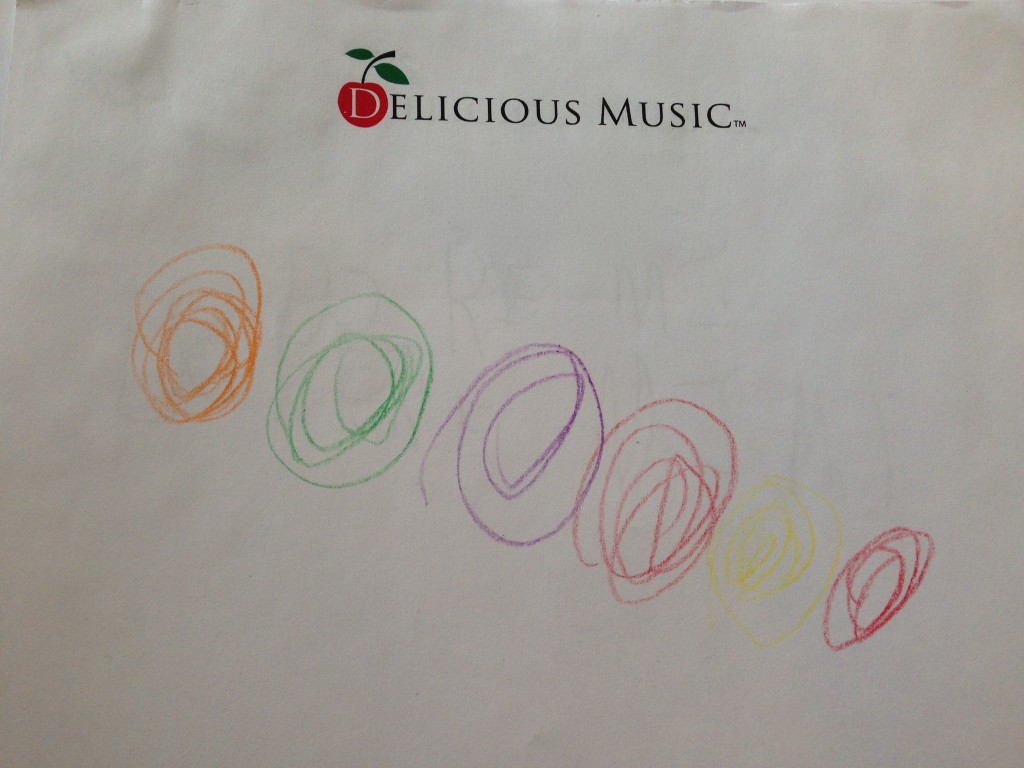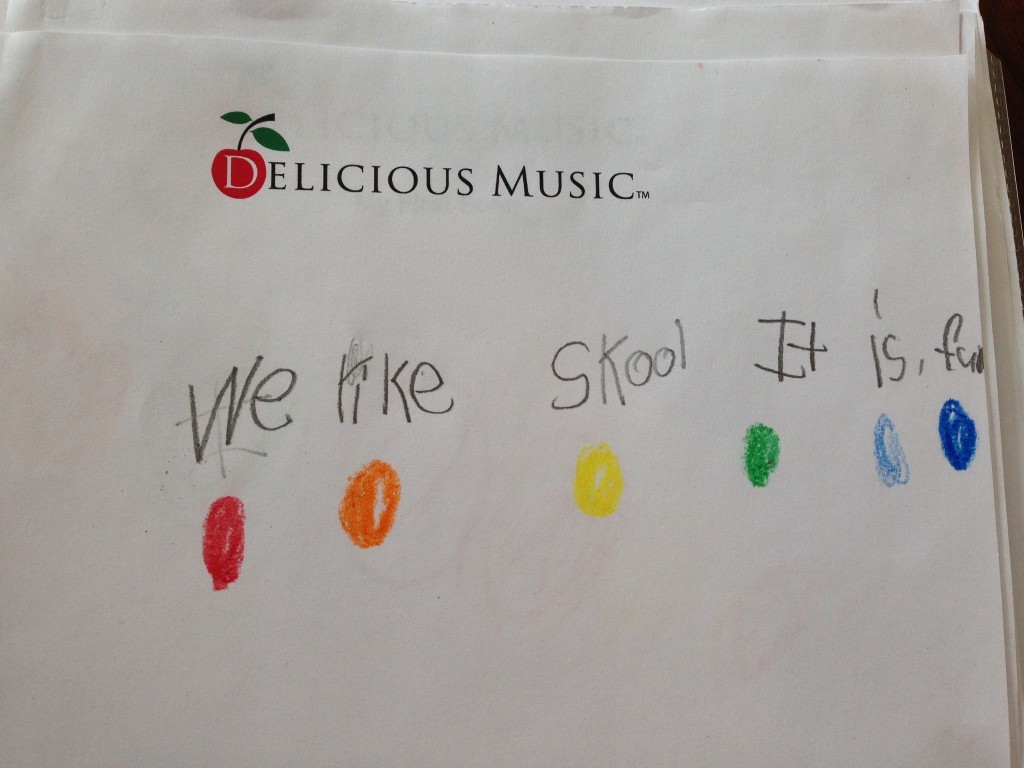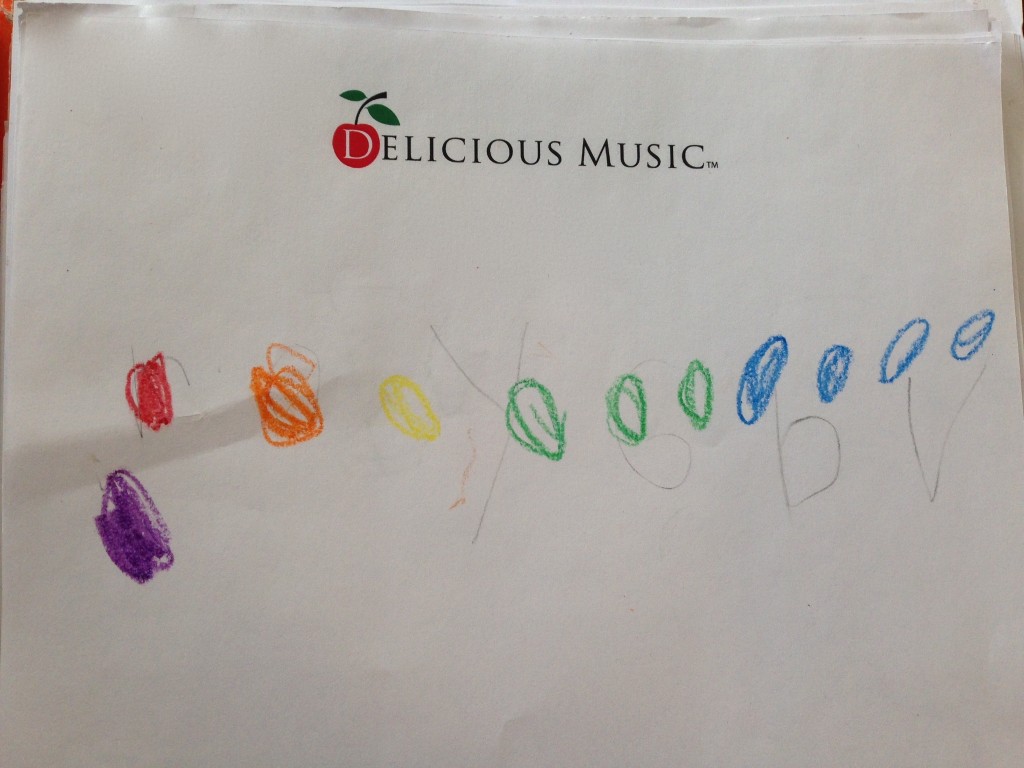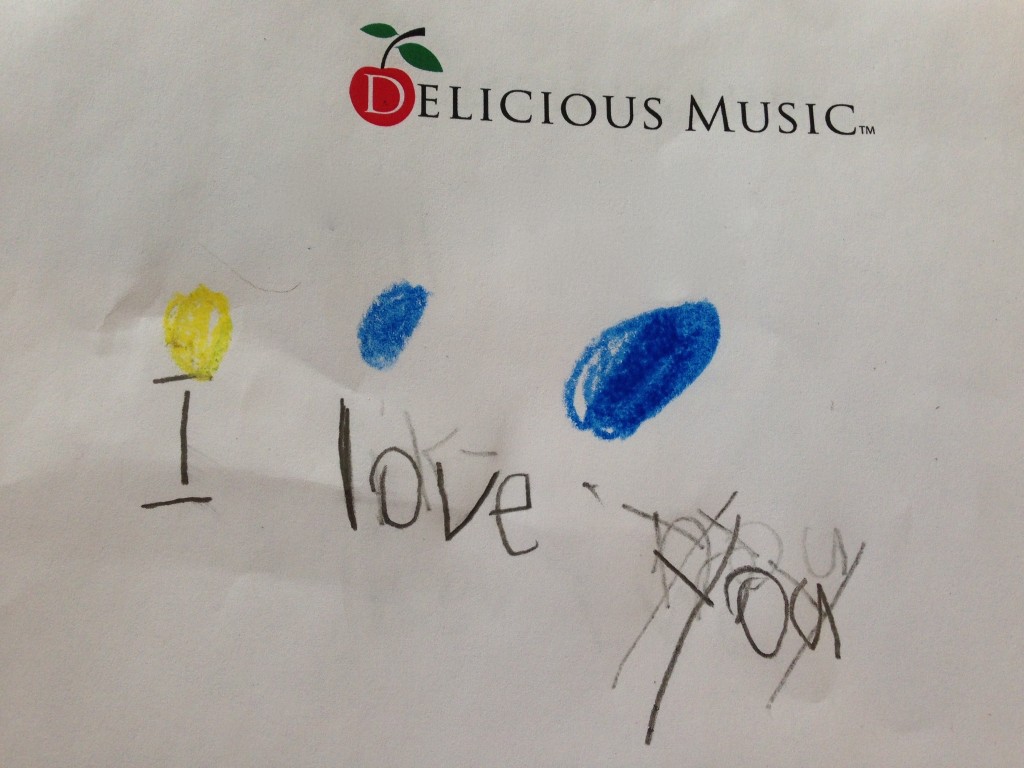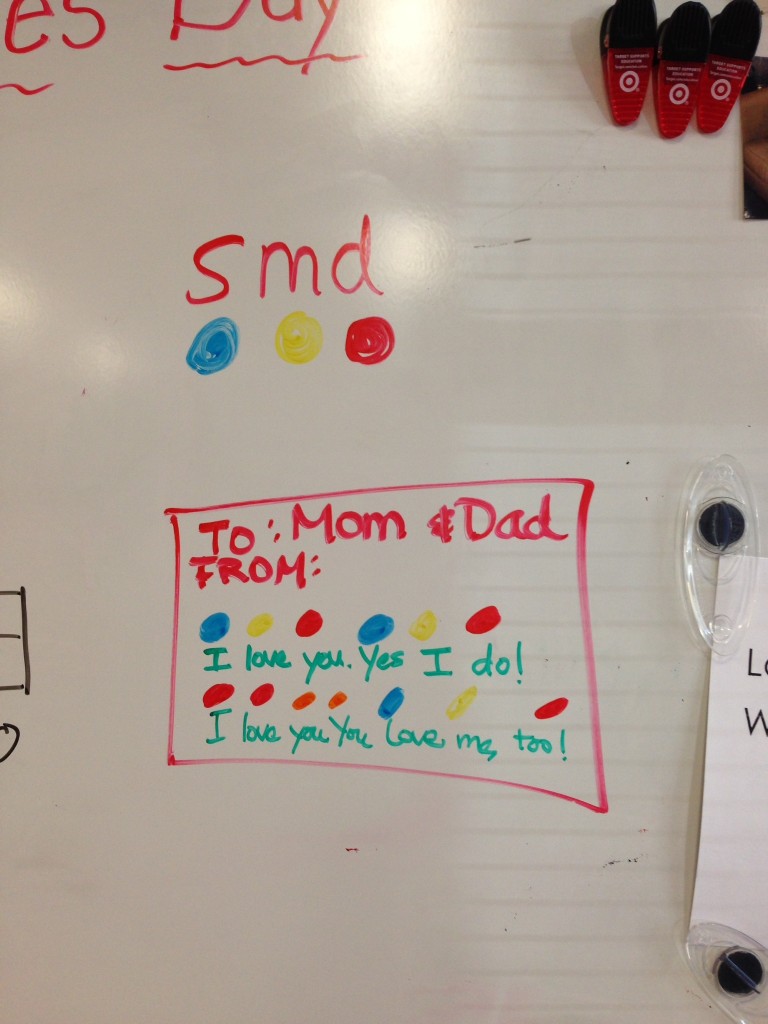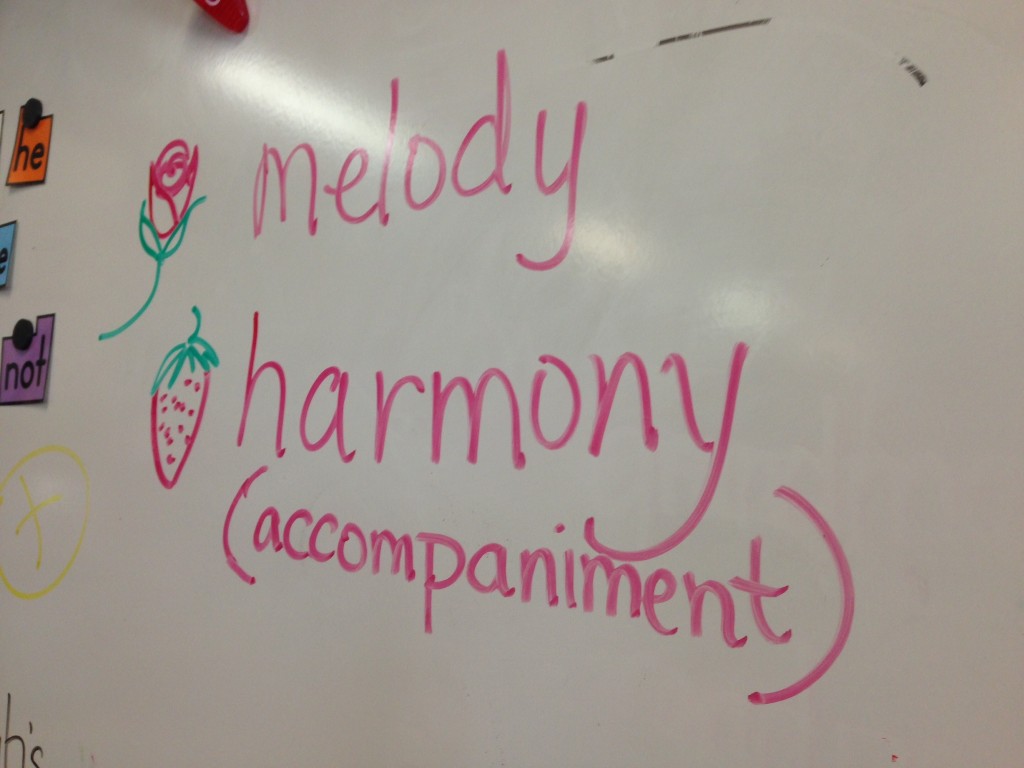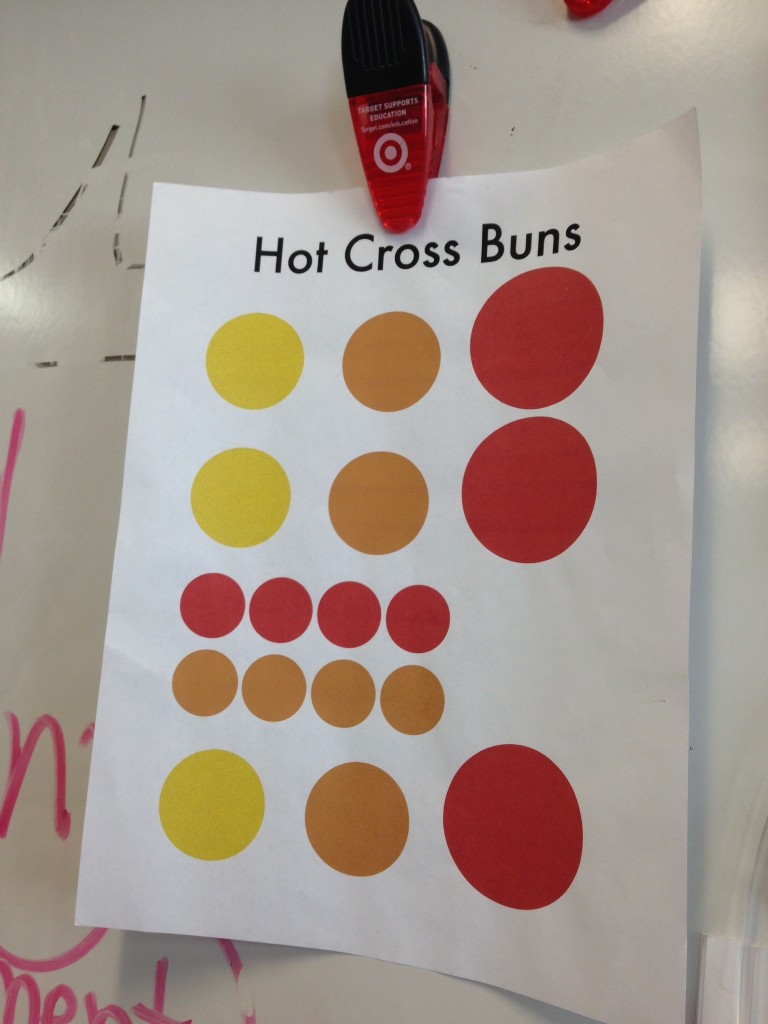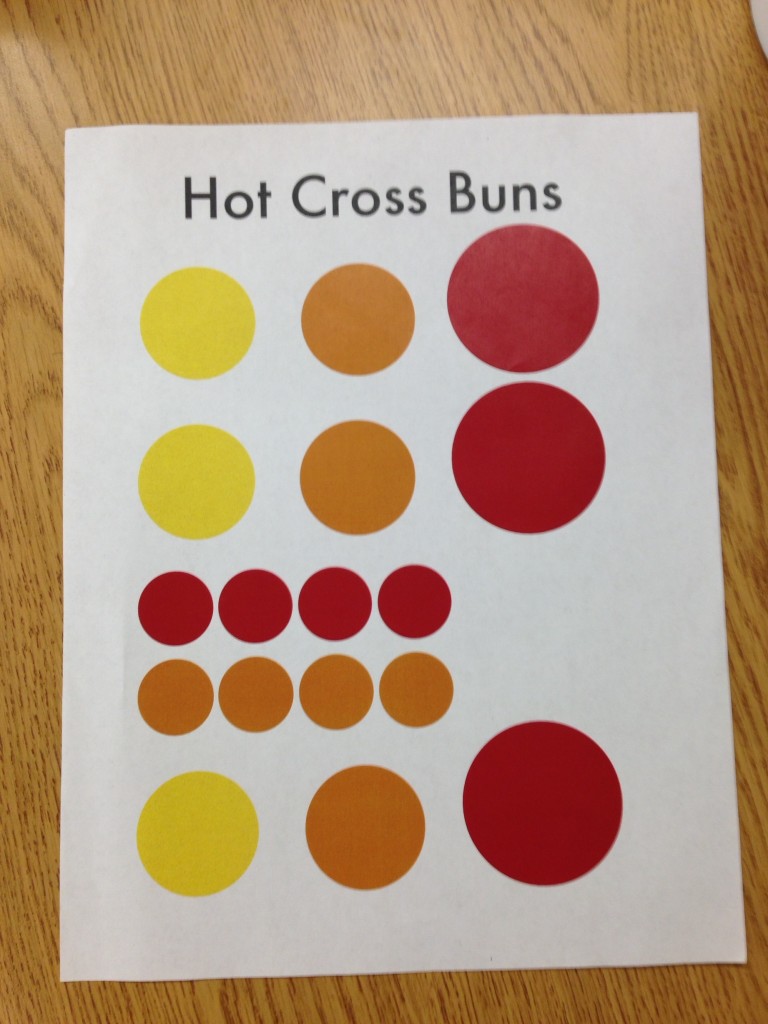 Today I told the children that I had been on an airplane last week flying to California. I asked them how fast an airplane flies. FAST! It has to fly fast, I explained, with all the weight it is carrying. How heavy is an airplane? VERY heavy, I answered (after they did), especially with all of those people on it! The engines have to be going very fast to create enough lift to get the heavy airplane up into the air!
Today I told the children that I had been on an airplane last week flying to California. I asked them how fast an airplane flies. FAST! It has to fly fast, I explained, with all the weight it is carrying. How heavy is an airplane? VERY heavy, I answered (after they did), especially with all of those people on it! The engines have to be going very fast to create enough lift to get the heavy airplane up into the air!
“Today we’re going to learn about speed in music,” I prepared. “But first, let’s review.” We warmed up on a Solfa scale, singing with our voices and hands the solfège signs as we sang an ascending and descending scale. (Do Re Mi Fa Sol La Ti Do Do Ti La Sol Fa Mi Re Do). Then I held up Hot Cross Buns (Hot Cross Buns Solfa dots or Hot Cross Buns dots ). We sang the song once using our hands and Solfa signs, and then we sang it again counting each note in song.
Next, we talked about the weather. I asked what kind of weather we had had this winter so far: DRY. What happens when we don’t get enough snow or rain? We can have a DROUGHT. Droughts are no fun, because we need water to live! We need water to grow the fruits and vegetables we eat! We need water to help the grass grow that the cows eat to be able to produce milk so that we can drink milk and eat cheese, butter, yogurt, and ice cream! We need water to help the wheat grow so we can eat bread, crackers, cookies, and cakes!
I put up this Song Garden version of “Rain, Rain Go Away.” I asked them to sing it with me. We sang it in Solfa first. I asked if anyone recognized this melody? Someone did! We sang the folk song with the usual lyrics. (Rain, rain, go away. Come again another day. etc.)
We sang through this song a couple of times. Then I clapped the tempo for how fast we were singing it. Our teacher became a metronome, and I pulled up my metronome app on my phone. I showed the children what a metronome looks like (at least on an app!), and ironically, we were singing at 112 bpm, which was where the metronome had been set the last time I used it! I explained that beats per minute means how many 1-beat notes are in a minut
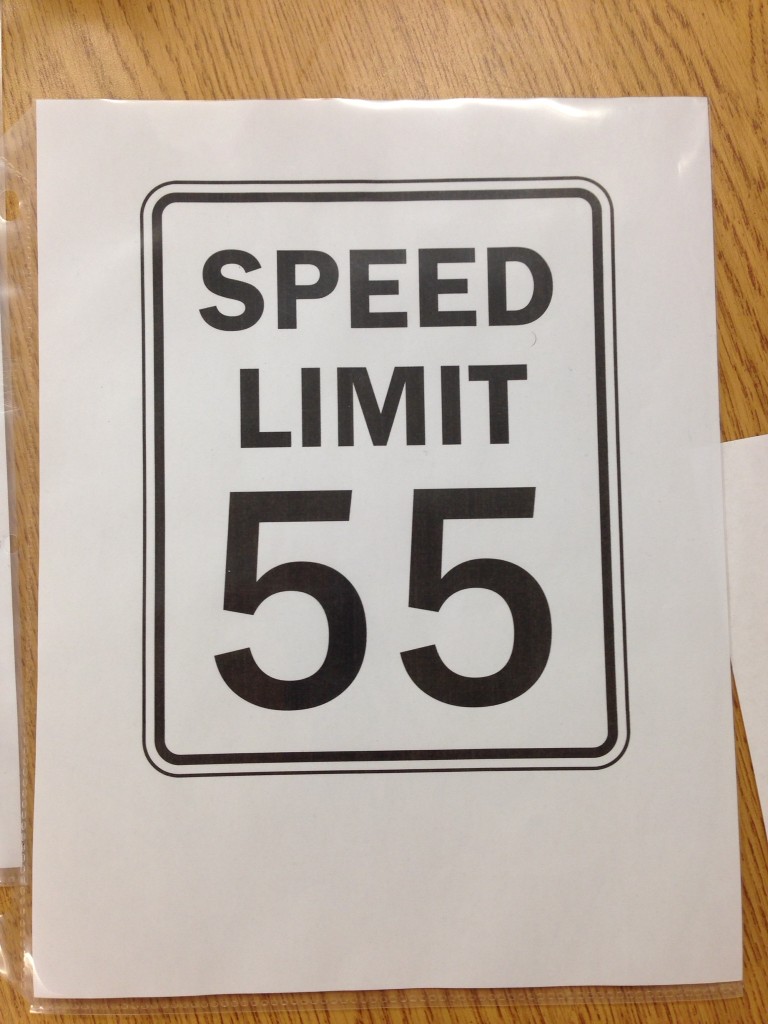 e.
e.
Next I held this page up and asked what it was. The children recognized it as a speed limit sign. I asked them what it meant. Some of them knew that it tells us how fast a car is allowed to go on a street.
I explained that in music, there is something called tempo, which tells us how fast to play a song. Tempo markings, I explained, are words often written at the beginning of a piece of music that tell you how fast (or slowly) to play a piece. These words are often in Italian. Italian, I asked, is spoken where? In Italy. “Yes! Where do we live? Which language do we speak? Does anyone speak any other languages? Tell us a word in Spanish (etc.).”
I held up an example of some sheet music with a tempo marking and pointed it out for all to see. I told them I was going to teach them 3 Italian words that are tempo markings. I put these signs up one at a time and explained them to the children.
“Adagio is slow. Say, “Adagio.” We repeated it three times. “Look up at the clock,” I motioned. “See the red second hand moving around. Tick, tock, goes the clock. Tick, tock, goes the clock,” I said, to the beat of the second hand.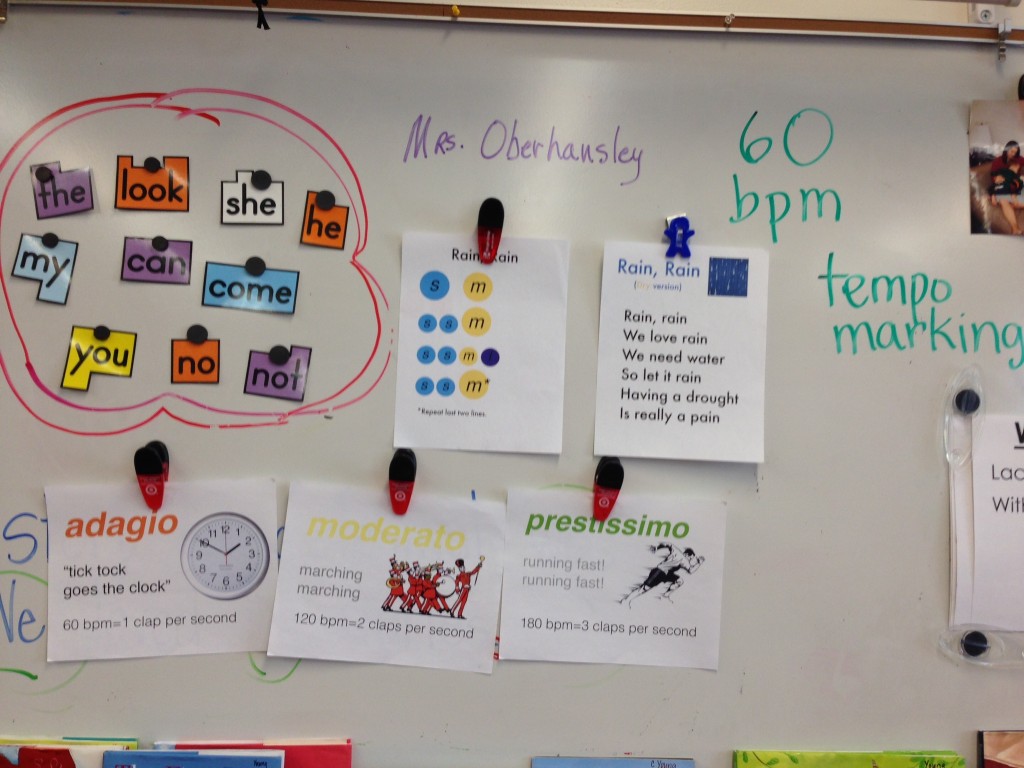
“Adagio is like walking. Walk in your spot with me. Tick, tock, goes the clock.” We walked in place for a few moments. Then we sang “Rain, Rain” at that tempo.
“Moderato is TWICE as fast as adagio, which means that there are TWO beats for every time the second hand goes ‘Tick, Tock.’ Let’s move the metronome up to 120 bpm and see how fast that would be.” I changed the setting and played it for them. It’s like the speed of marching in a parade,” I told them. “March, march, march, march. March in place like you are marching in a parade.” “I can march on my feet, I can march down the street, I can march in the big parade,” I sang, an excerpt from a song from my childhood. We sang “Rain, Rain” at the new tempo.
“Prestissimo is THREE TIMES as fast as adagio! That means there are THREE beats for every time the second hand goes ‘Tick, Tock.'” I repeated the metronome change to 180 bpm, and we ran in place at that speed. Then we sang “Rain, Rain” at the new tempo.
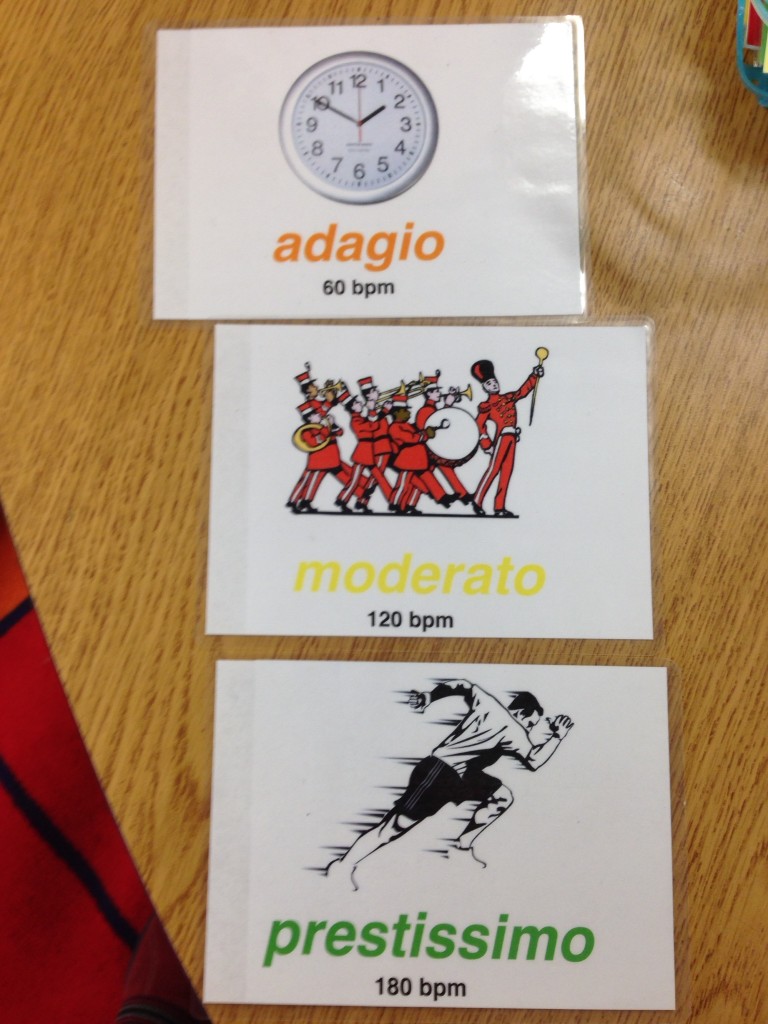
We all sat down again. I pulled out these mini signs and said we were going to play a little game to test them on their tempo markings. While shuffling the cards, I told them I would hold up a word, and they needed to say if it was “slow, medium or fast” and then say the word. I held one up in the air quickly. “Slow! Adagio!” they cheered. We continued until we had reviewed each new word a few times.
We had 10 minutes left. I sent the children to get their bells and head to their tables. I handed out a piece of paper to each child and told them that they had 3 minutes to write a song. Any notes! Any words if they wanted words! They started. I told them when they had 1 minute left. Before we starting our performances, I told them we needed to be sure to practice good audience manners! That means they need to be quiet as mice while the person is performing. “That means you can’t lean over to your neighbor and talk or whisper loudly. You give your whole attention to the performer.” When the person is done, they clap until the performer has bowed. I modeled a bow. I also mentioned that if you are in a wheelchair, you can do a seated bow and explained that performers who sometimes give a seated bow include cellists and harpists.
Then I went around the room and let one child at a time share. One child from each table shared, and then I went back around. Not everyone got to share, so I collected the papers to pull out next week.
Here are some of the children’s compositions:
The children LOVED performing! I had more volunteers than time to let them share, but we had SUCH a great time. Like one boy said after, when I told him how proud I was of him, he said, “It was awesome!”
We sang our goodbye song, collected the songs, and put our bells away.
